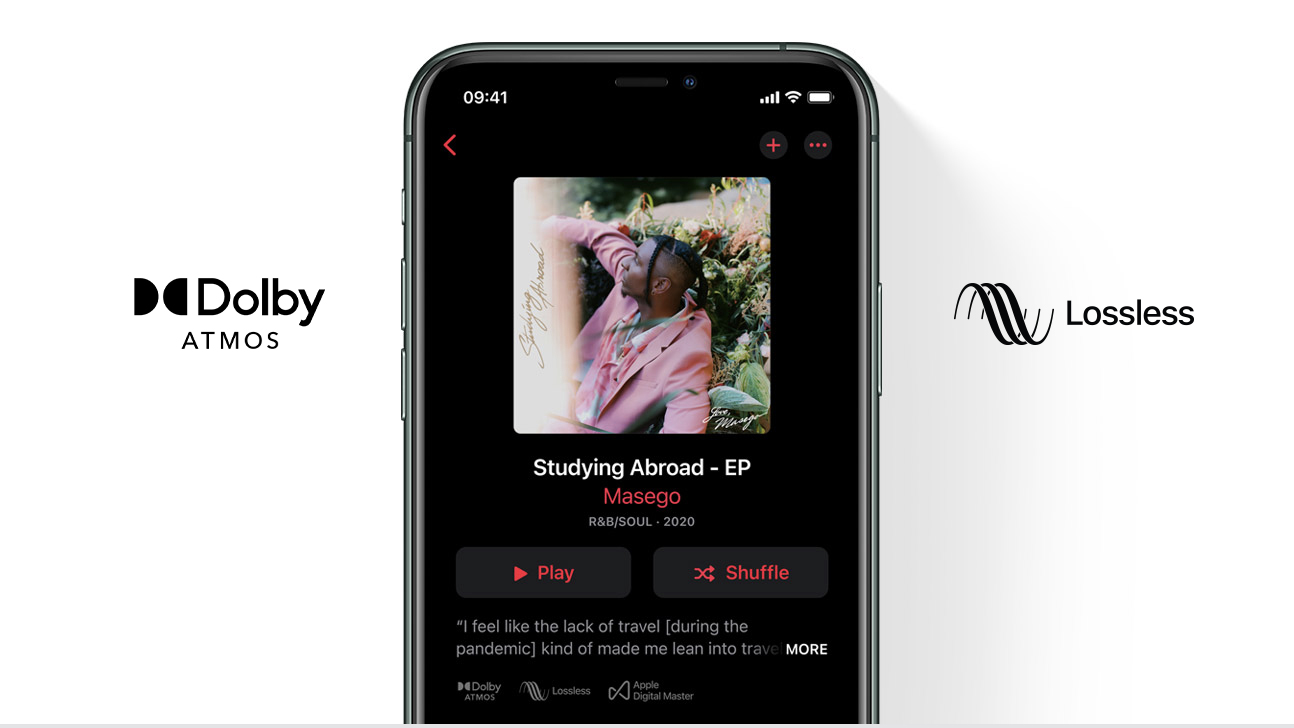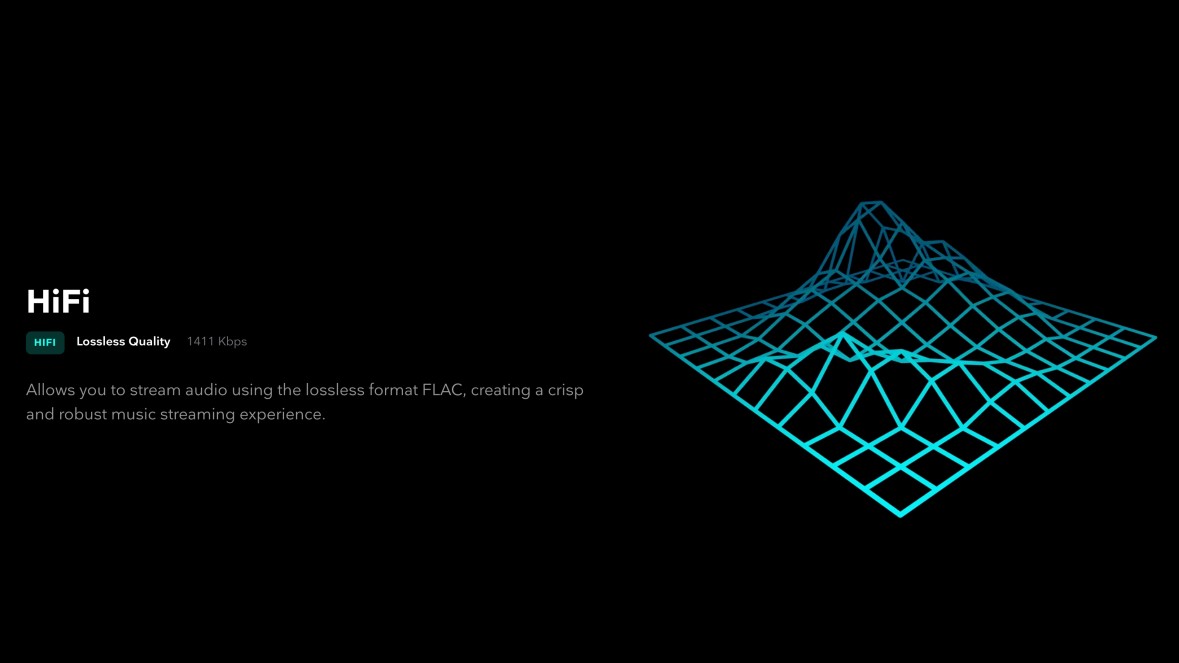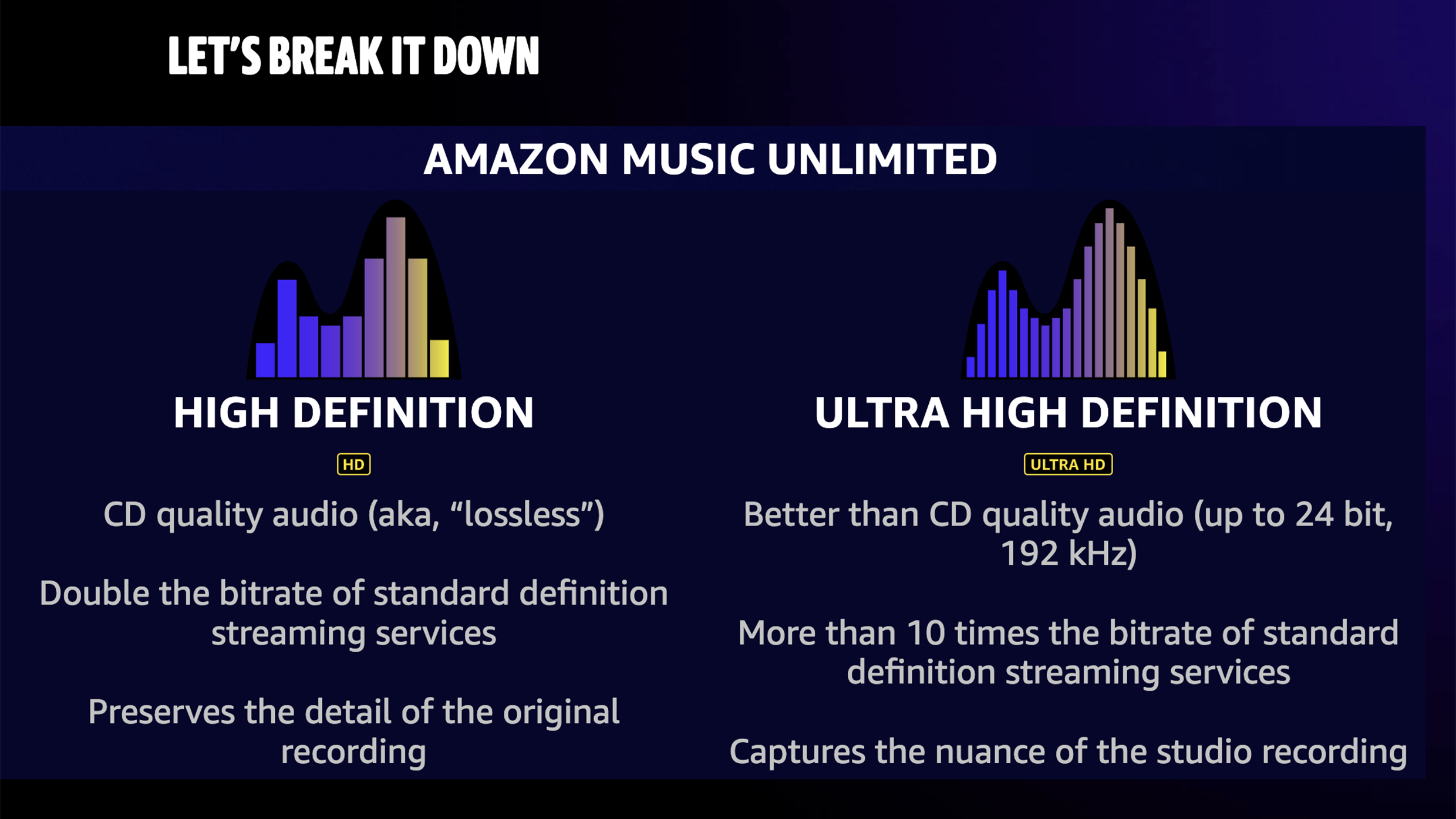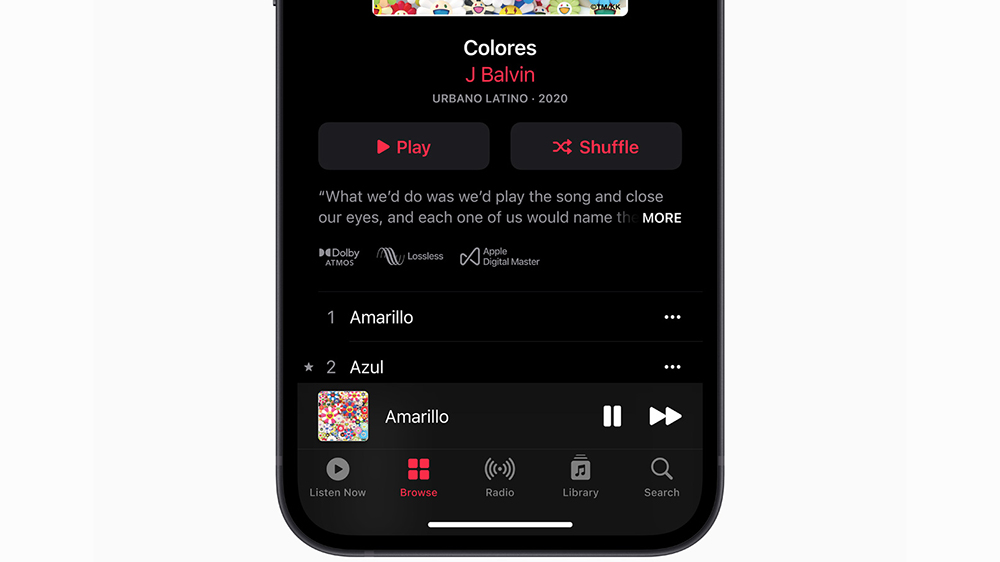What is lossless audio? Is it worth it and do you need it?
The lowdown on lossless and how it compares to ‘lossy’ and ‘hi-res’ audio

You’ll likely have seen the term ‘lossless audio’ bandied around in the music space in recent years. While by no means a new term in the audiophile realm, it has fairly recently expanded into the mainstream courtesy of Apple, Amazon and Spotify adopting it in its recent audio hardware and software products, and consequently shouting about it from its marketing HQ rooftops. Apple labels many of its Apple Music streams as ‘Lossless’; Amazon describes its ‘HD’ music streams as ‘aka lossless’; and Spotify says that its long-anticipated Spotify HiFi streaming tier will deliver a ‘lossless audio format’ over Spotify Connect. Presumably, hearing the term is what has led to your curiosity and landed you on this very page.
You might have gathered that ‘lossless audio’ generally represents higher quality audio than you may be used to. That’s what it’s being sold as anyway, and if you’ve spent many years listening to lossy MP3s and music streaming services, that could well be the case. But you are just as likely to have heard of ‘hi-res audio’ – perhaps even in conjunction with lossless. So what is lossless audio exactly? What is the difference between lossless and lossy, and how does lossless compare to hi-res? Right this way, please…
What is lossless audio?
Whether an audio file or stream is lossless or lossy or uncompressed (it has to be one of those three) depends on whether it has been compressed and, if it has been, how it’s been compressed.
A quick 101 on audio compression: compression is used to make an audio file/stream smaller in size and therefore more practical to store or handle. A compressed stream typically demands less internet bandwidth than an uncompressed stream; a compressed file requires less storage than an uncompressed file. The problem is that the compression process can discard some audio data so that you aren’t getting all (and in many cases, quite a lot) of the information in the original audio recording, and therefore the original quality.
Essentially, uncompressed audio (typically stored as WAV and AIFF formats) is an exact reproduction of the original studio recording. And then lossless and lossy audio come under the compressed category. But – and it’s a big ‘but’ – lossless audio (typically stored as ALAC and FLAC formats) is compressed for that practicality mentioned above but in a way that doesn’t lose any information and so shouldn’t affect sound quality, whereas lossy audio (typically stored as MP3 and AAC formats) is more heavily compressed for the easiest transport/storage and does lose information in the process.
You can read about which popular audio formats fall into which category in our audio file formats explained article, but let’s move on to other ways lossless audio is defined.

Lossless vs hi-res audio: what's the difference?
Now, in numerical terms, ‘lossless audio’ is typically accepted as being 16-bit/44.1kHz – which is the bitrate (16) and sample rate (44.1kHz) of CD music files. That’s right, ‘lossless’ quality as it is considered today is essentially what you have listened to for much of your life (and maybe downgraded from, as you adopted streaming!). That’s why you’ll often see ‘CD quality’ and ‘lossless’ presented as one and the same, as is the case on Amazon Music HD’s website (pictured below).
Again, though, it’s important to remember that ‘lossless’ is the term streaming services have chosen to label their CD-quality streams to stand them apart from their lower-quality streams and, if they have them, their hi-res streams; technically any recordings packaged losslessly, in FLAC and ALAC for example, are lossless.
The use and definitions of the term ‘hi-res audio’ aren’t exactly resolute either*, but it’s widely accepted that hi-res quality is audio that has a bitrate and/or sample rate above CD (‘lossless’) quality. So hi-res audio can be 16-bit/96kHz or 24-bit/44.1kHz audio, though the most common hi-res audio quality commercially available to stream and or download is 24-bit/48kHz or 96kHz.
In practical terms, hi-res audio should sound superior to lossless audio because it has a higher bitrate and sample rate. After all, the increased number of bits means a wider dynamic range, while the higher sampling rate gives greater bandwidth and improved accuracy in defining transients.
So why isn’t everything hi-res? Why do we have ‘lossless’ at all? Because bigger bit and sample rates equal bigger file/stream sizes that demand more bandwidth and storage. That said, as internet speeds rise and file/stream packaging technologies advance, this is arguably becoming less of an issue.
Then there’s the question of whether it’s worth seeking out hi-res or ‘just’ lossless music. In cases where hi-res quality demands higher costs for downloads/streams and/or extra storage, should you try to accommodate it? The answer here depends on whether your ears can audibly hear the difference or not, which might come down to how transparent your music playback set-up is. If it’s not good enough to lay bare the extra insight a hi-res recording offers, then there’s little reason to pay more for it unless you’re willing to upgrade your hardware.
*Apple, for example, categorises its ‘Lossless’ streams as between 16-bit/44.1kHz and 24-bit/48kHz, and its ‘Hi-Res Lossless’ streams as anything over 24-bit/48kHz.
- Everything you need to know about high-resolution audio

How can you listen to lossless music?
Well, you can listen to or rip a CD, of course! Though understandably, many of you reading this may have done away with CDs years ago and are reluctant to look back, while others may not have CD listening experience at all and are similarly dismissive of going down the compact disc route. So, alternative options...
If you want to build your own digital music library, you can download music in lossless from most music download stores that are still hanging around, or you can rip vinyl albums into lossless files using certain USB turntables and software. The thing is, it’s all about streaming for the masses today, isn't it? Well, good news: music streaming is now very lossless-friendly.
That hasn’t been the case for very long. While more niche streaming services such as Tidal, Qobuz and Deezer have offered a lossless, CD-quality subscription tier for years, often at a higher monthly price, it’s only in the past few that more mainstream services such as Apple and Amazon have offered lossless – and for no extra cost too.
Spotify will supposedly join the lossless audio party when its (very, very) delayed HiFi (or 'Supremium'?) service goes live too. Today, you can stream in lossless quality for what has typically been considered the standard music service subscription price of £10/$10/AU$12 per month. (Although you add on an extra pound/dollar now due to recent price hikes).
Can lossless play over Bluetooth?
Oh look, a large fly has just landed in the ointment...
OK so you can use Bluetooth to send a lossless file or stream to your wireless headphones or speakers, but what you’ll hear is a lossy version – Bluetooth codecs will compress it lossily during transmission in a way that detrimentally affects sound quality.
That said, hope is on the horizon as Qualcomm (who is behind the higher-quality aptX, aptX HD and aptX Adaptive codecs) says its latest aptX Lossless codec is the first to be able to transmit Bluetooth losslessly, providing both the source device (your phone, say) and music playback device (your headphones, for example) support the codec – which not many do right now.
We’re looking forward to seeing what the recently announced SCL6 technology by MQA can do in this respect too. Indeed, we seem to be getting there or thereabouts.

Can lossless play over AirPlay?
Lossless audio over AirPlay doesn’t seem to be as black and white. AirPlay can transmit locally stored lossless hard files losslessly to an AirPlay receiving device – the Airplay 2 protocol supports up to 24-bit/48kHz. But frustratingly, Apple Music’s Lossless streams seem to convert from ALAC (Apple’s lossless codec) into AAC (Apple’s lossy codec) at a pretty lowly 256kbps when transmitted over AirPlay – and therefore not losslessly.
There has been a suggestion that Apple is working on a software update to enable lossless over AirPlay (we are asking Apple if that is indeed the case), so fingers crossed that this transpires and thus Apple’s lossless offering becomes more validated. If Spotify Hi-Fi’s lossless streams really will be deliverable losslessly over Spotify Connect, as the company has said it will, Apple will no doubt want to make sure its wi-fi protocol is capable of the same thing.
AirPlay aside, select Apple hardware can play losslessly in other ways. Some, such as the HomePod 2, can natively play lossless audio over wi-fi by drawing directly from the Apple Music servers, for example. And here's how to play hi-res music and lossless audio on your iPhone.
MORE:
Hi-res music streaming services compared: which should you sign up for?
The problem with hi-res audio is how you might be listening to it
The best music streamers you can buy
Where can you buy hi-res music? Here are the top download sites
Get the What Hi-Fi? Newsletter
The latest hi-fi, home cinema and tech news, reviews, buying advice and deals, direct to your inbox.
Becky is the managing editor of What Hi-Fi? and, since her recent move to Melbourne, also the editor of the brand's sister magazines Down Under – Australian Hi-Fi and Audio Esoterica. During her 11+ years in the hi-fi industry, she has reviewed all manner of audio gear, from budget amplifiers to high-end speakers, and particularly specialises in headphones and head-fi devices. In her spare time, Becky can often be found running, watching Liverpool FC and horror movies, and hunting for gluten-free cake.
-
Bollardlpd8 Reply
An informative, lucid and engaging article. A pleasure to read. Well written!What Hi-Fi? said:It’s very likely you’ll have seen the term ‘lossless audio’ bandied around in the music space in recent years, but is it something you need in your life?
What is lossless audio? Is it worth it and do you need it? : Read more -
Sir Ken Smith OBE Where can I get a firmware update for my brain and ears so I can hear the benefits of hi-res audio?Reply

